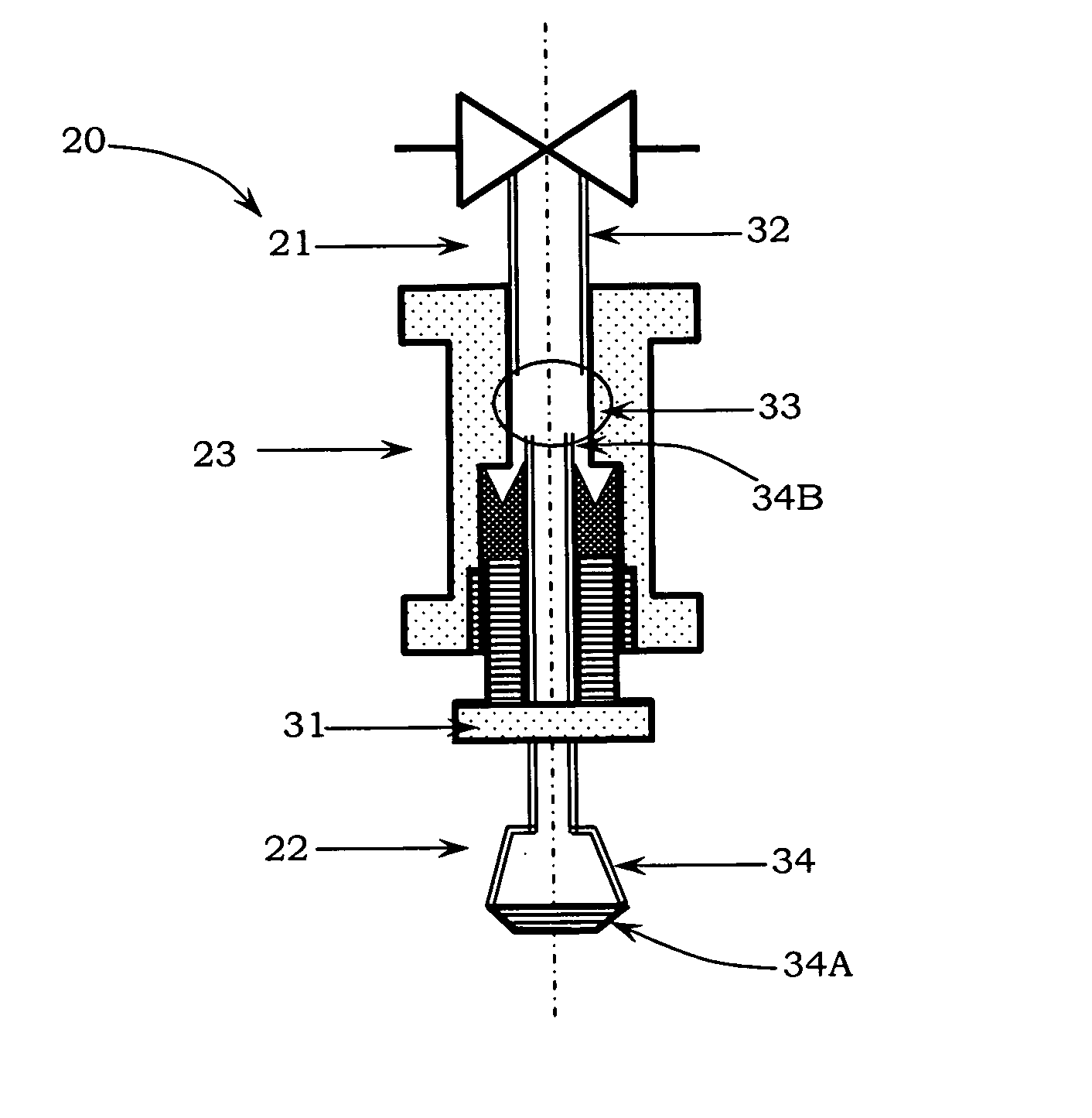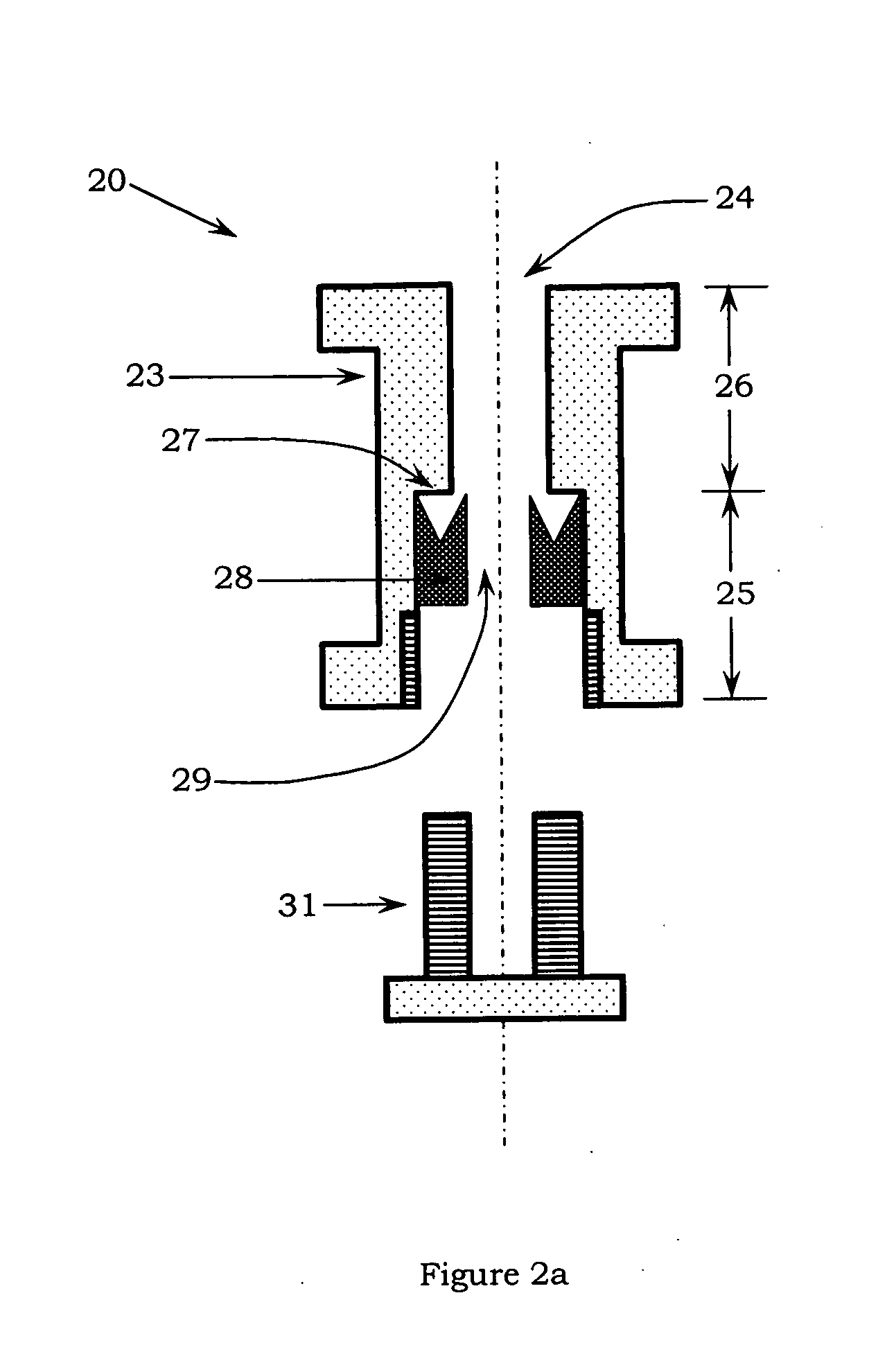Apparatus and method for fabricating optical fiber preform.
a technology of optical fiber and apparatus, which is applied in the direction of metal-working holders, positioning apparatuses, supports, etc., can solve the problems of increasing the chances of capillary contamination, contamination or deformation of any kind of capillary has a severe negative impact on the attenuation of optical fiber, and the unwanted attenuation increase or other waveguide parameters of optical fiber, so as to avoid and inhibit leakage, the effect of being versatile and widely applicabl
- Summary
- Abstract
- Description
- Claims
- Application Information
AI Technical Summary
Benefits of technology
Problems solved by technology
Method used
Image
Examples
example 1
[0120] A hollow soot porous body with outer diameter of 170 mm and having a capillary at the center of about 4 mm (after removing the cylindrical member) was fabricated by ACVD process. This hollow soot porous body was fitted with glass plug at the capillary end remote from the handle. The hollow soot porous body handle was fitted with rotary sealing mechanism having no cooling system in accordance with one of the preferred embodiments of the present invention. It was dried in an atmosphere of chlorine and helium at a temperature of 1000° C. Then the end of the capillary remote from the handle of the preform fitted with a glass plug was heated to a temperature of 1550° C. to cause engagement of glass plug. Thereafter, a vacuum of about 550 mm Hg was applied to the capillary, through the rotary sealing mechanism of present invention. The hollow soot porous body was inserted at an insertion speed of 4.5 mm / min in the sintering furnace. While heating the hollow soot porous body was rot...
example 2
[0122] The method for fabricating the preform and drawing a fiber therefrom was followed as described in Example 1 above. However, the rotary sealing mechanism of U.S. patent '069 was employed for achieving contact between rotating member [rotating hollow soot porous body] and stationary member [connection to vacuum pump]. The attenuation values for the optical fiber drawn by an apparatus emptying rotary sealing mechanism of US '069 are shown in Table II below. It is observed that the attenuation losses for the optical fiber drawn by an apparatus comprising rotary sealing mechanism of US '069 are well above the desired values of 0.34 dB / Km at 1310 nm and 0.20 dB / Km at 1550 nm confirming that the rotary sealing mechanism of US '069 does not work satisfactorily and causes any release of certain particles from its sealing members [the O-rings], and leakage of vacuum from rotary sealing mechanism and contamination of capillary of hollow soot porous body with atmospheric contaminants dur...
PUM
| Property | Measurement | Unit |
|---|---|---|
| Fraction | aaaaa | aaaaa |
| Nanoscale particle size | aaaaa | aaaaa |
| Nanoscale particle size | aaaaa | aaaaa |
Abstract
Description
Claims
Application Information
 Login to View More
Login to View More - Generate Ideas
- Intellectual Property
- Life Sciences
- Materials
- Tech Scout
- Unparalleled Data Quality
- Higher Quality Content
- 60% Fewer Hallucinations
Browse by: Latest US Patents, China's latest patents, Technical Efficacy Thesaurus, Application Domain, Technology Topic, Popular Technical Reports.
© 2025 PatSnap. All rights reserved.Legal|Privacy policy|Modern Slavery Act Transparency Statement|Sitemap|About US| Contact US: help@patsnap.com



